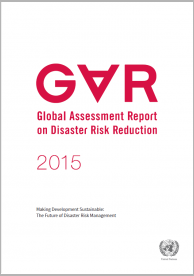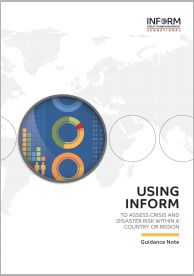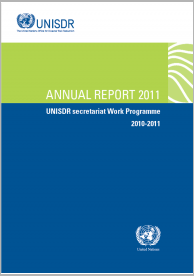
This report presents recommended indicators to monitor the global targets of the Sendai Framework, the follow-up to and operationalization of the indicators and recommended terminology relating to disaster risk reduction.
The following is a list of all conten labeled as "Global"

This report presents recommended indicators to monitor the global targets of the Sendai Framework, the follow-up to and operationalization of the indicators and recommended terminology relating to disaster risk reduction.

The 2015 Global Assessment Report on Disaster Risk Reduction (GAR15), Making Development Sustainable: The Future of Disaster Risk Management, is the fourth in the series coordinated by the United Nations Office for Disaster Risk Reduction (UNISDR) in the context of the Hyogo Framework for Action 2005-2015: Building the Resilience of Nations and Communities to Disasters (HFA).

The purpose of this document is to provide a brief introduction to the INFORM Subnational process for decision-makers. It covers:

The aim of this report is to support legislators, public administrators, DRR and development practitioners and advocates to prepare and implement effective disaster risk management (DRM) legal frameworks for their country’s needs, drawing on examples and experience from other countries.

This Annual Report for 2011, which provides a comprehensive overview of the UNISDR Biennial Work Programme 2010-2011, focuses on UNISDR’s work with partners to deliver results and measures achievement against the strategic objectives for these two years. It briefly sets out UNISDR progress against four strategic objectives:

At its 5th plenary meeting, on 27 May 1994, the Conference adopted the Yokohama Strategy for a Safer World: Guidelines for Natural Disaster Prevention, Preparedness and Mitigation, containing the Principles, the Strategy and the Plan of Action, as well as the Yokohama Message (resolution 1).